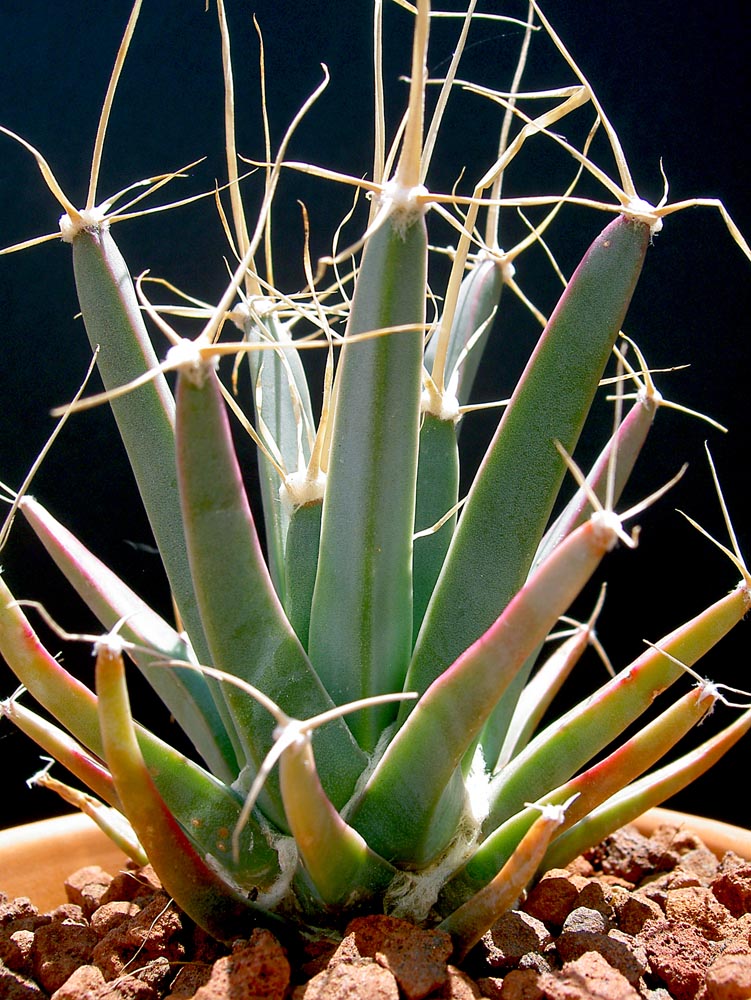Leuchtenbergia is a genus that often challenges the preconceptions of what constitutes a cactus. With a singular morphology that distinguishes it from its more familiar relatives, it is a captivating subject worthy of exploration. This unusual plant, native to Mexico, promises not only to alter your perspective on cacti, but also to pique your curiosity regarding the diversity of the cactus family.
Embarking on this journey, we delve into the origins, unique characteristics, cultivation techniques, and care requirements of Leuchtenbergia. This comprehensive guide will enable enthusiasts and novices alike to appreciate the splendor of this remarkable genus.
Understanding the Roots: The Origins of Leuchtenbergia
Leuchtenbergia principis is perhaps the most recognized species within this genus. Indigenous to a small region in Mexico, this cactus flourishes in arid, rocky terrains where it often goes unnoticed among more flamboyant flora. Its name pays homage to the German botanist Johann von Leuchtenberg, reflecting a legacy of scientific exploration intertwined with the plant’s existence.
The genus is characterized by its columnar, elongated shape, which can grow up to 30 centimeters in height. The plant is covered in small, dense, spiny tubercles that give it a unique textured appearance. Unlike many other cacti, Leuchtenbergia displays a somewhat drab color palette, typically exhibiting green to bluish-green hues that blend harmoniously with its native landscape. This plant, however, is a testament to nature’s intricacy, demonstrating that beauty often lies in subtlety.
Fascinatingly, these cacti are known as “pseudo-cacti” because of their affinity to other plant families such as the Agavaceae or the Euphorbiaceae. This evolutionary relationship raises intriguing questions about plant classification and biodiversity. Leuchtenbergia serves as a reminder of the botanical world’s complexity, exposing the intricate web of relationships that bind various species.
Nature’s Sculpture: The Unique Characteristics of Leuchtenbergia
Upon close examination, the idiosyncrasies of Leuchtenbergia reveal its extraordinary potential as a subject of study. The structure of this cactus is wholly unique, as each individual plant produces a cylindrical, worm-like body that gives it a distinct silhouette against the backdrop of its arid habitat.
The spines of Leuchtenbergia are particularly noteworthy. While many cacti possess well-defined spines, Leuchtenbergia’s spiny tubercles are less pronounced, forming a fine network that is more reminiscent of a bristly texture than a typical spiny defense mechanism. This adaptation serves the dual purpose of providing protection while also enabling the plant to conserve moisture—a crucial survival tactic in its native environment.
As the seasons change, Leuchtenbergia experiences a remarkable transformation. In spring, the plant produces stunning yellow flowers that bloom at its apex, enticing pollinators and adding a splash of color to the otherwise muted landscape. These flowers, although fleeting, highlight the ephemeral beauty that characterizes many desert-dwelling species, reminding observers of nature’s mercurial tendencies.
Cultivation and Care: Nurturing Your Own Leuchtenbergia
Those enchanted by the allure of Leuchtenbergia have the opportunity to cultivate this exceptional species in their own gardens or homes. However, to successfully grow this plant, it is essential to recreate its native habitat to the best of one’s ability. Here are key considerations for effective cultivation.
Optimal Soil Composition
Leuchtenbergia thrives in well-draining soil that mimics the rocky, arid conditions of its natural environment. A cactus-specific potting mix combined with perlite or coarse sand offers the necessary drainage while preventing root rot. It is crucial to avoid heavy soils that retain moisture, as this can lead to fungal infections and diminish the plant’s vitality.
Watering Regimen
When it comes to watering, adopting a conservative approach is essential. During the growing season, typically from spring to summer, the plant can benefit from infrequent watering. Allow the soil to dry out completely between watering sessions, as Leuchtenbergia is remarkably drought-tolerant. In contrast, during the dormant winter months, watering should be reduced to a minimum, often allowing the plant to experience drought conditions, simulating its natural environment.
Lighting Considerations
Leuchtenbergia prefers bright, indirect sunlight, thriving when placed in a well-lit area that protects it from the harsh midday sun. Direct sunlight can lead to sunburn, which manifests as discolored patches on its surface. A south-facing window or a greenhouse setting can provide the ideal conditions for growth, promoting robust health and vibrant flowering.
Temperature and Humidity
This cactus is accustomed to warm, dry conditions, making it suitable for cultivation in temperate and subtropical climates. Ideally, temperatures should range between 20-30°C (68-86°F) during the day, with cooler nights providing a slight temperature drop. Humidity levels should be kept low, as excessive moisture can compromise its health. In colder months, it is advisable to bring the plant indoors to protect it from frost and extreme temperature fluctuations.
Pest Management: Protecting Your Treasure
Cacti are not immune to pests, and Leuchtenbergia is no exception. Common pests such as mealybugs, scale, and spider mites can pose a threat to its well-being. Regular inspections and prompt action can prevent infestations from taking hold. Using organic insecticidal soap or neem oil can prove effective in managing these unwelcome guests while maintaining the plant’s health.
Conclusion: An Invitation to Explore the Extraordinary
Leuchtenbergia is often overlooked in the vast diversity of cacti, yet it offers a captivating opportunity to expand our understanding of these resilient plants. Its distinctive characteristics and adaptability challenge conventional notions about cacti and invite enthusiasts to embrace the unexpected. Whether you are a seasoned collector or a curious newcomer, nurturing a Leuchtenbergia can unlock a world of botanical wonder.
As you tend to your own plants, consider the greater narrative in which they exist. Each Leuchtenbergia is a living testament to the adaptability and resilience of nature, reminding us of the intricate connections that sustain life in even the harshest environments. By fostering a connection with these remarkable plants, you join in a larger conversation about the importance of conservation and appreciation of biodiversity. In the end, Leuchtenbergia is not merely a plant but an emblem of nature’s artistry and ingenuity.

Leave a Comment